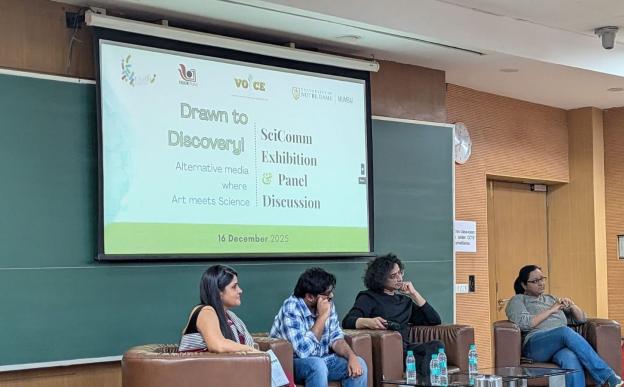
A team of researchers from the Indian Institute of Space Science and Technology (IISST), Thiruvananthapuram, has developed a novel method to combat the chaotic effects of atmospheric turbulence on laser communication beams. In a significant step toward more reliable high-speed internet, the researchers combined physics with a statistical framework based on geometry to stabilise a beam of light. They used simple polymethyl methacrylate (PMMA), a common plastic, to partially correct a distorted laser beam and restore its statistical order. Their research was published on the preprint server arXiv, and is yet to be peer reviewed.
Free-space optical (FSO) communication is a wireless technology that uses lasers or LEDs to transmit data through the air or through the vacuum of space, achieving high-speed data rates without the need for physical cables. One of the core problems for FSO communication, at least here on Earth, is the atmosphere itself. As a laser beam travels through the air, random fluctuations in temperature and pressure cause variations in the air's refractive index, a measure of how much light bends or slows down when it passes from one medium into another. These variations act like shifting lenses, causing the beam to bend, disperse, and fluctuate in intensity — a phenomenon known as scintillation. This distortion, in turn, severely impacts the reliability of the communication link.
Did You Know? Various satellite constellations that are intended to provide global broadband coverage, such as SpaceX Starlink, employ laser communication for inter-satellite links. |
To address this, the researchers introduced a unified theoretical and experimental approach that exploits the collective behaviour of electrons within a dense dielectric medium. The experiment involved passing a laser beam through a device that simulates atmospheric turbulence, known as a Pseudo-Random Phase Plate (PRPP). Then, the turbulent beam is sent through one or two rods made of PMMA, a transparent plastic often sold under the trade names Plexiglas or acrylic.
While a relatively simple step, the science behind the common acrylic’s ability to restore atmospheric distortion results from a complex interaction between light and the PMMA rods, explained using the Lorentz Anharmonic Coupled Dipole Oscillator theory. When electromagnetic waves, such as the light from a laser, enter PMMA, they perturb the electron clouds of the molecules. The disturbance separates the negative and positive ions in PMMA, inducing tiny oscillating electric dipoles that form when two opposite charges are separated by a distance. Crucially, these dipoles do not oscillate independently. Instead, they interact and exchange energy, leading to a coupled oscillation in which the dipoles oscillate in unison.
The researchers found that this coupling forces the dipoles to synchronise, creating collective, ordered modes of oscillation. This emergent, stable behaviour within the PMMA effectively counteracts the chaotic, random fluctuations introduced by the atmospheric turbulence, partially restoring the beam's statistical coherence.
To prove this compensation was effective, the researchers captured 200 frames of the laser beam under four conditions: light without turbulence (baseline), raw turbulence without any correction, turbulence with one PMMA rod, and turbulence with two PMMA rods. Next, they quantified the difference between these beams using a geometric measure called the Affine-Invariant Riemannian Metric (AIRM) distance, which allowed them to measure how far the turbulent beam's shape was from the perfect, turbulence-free beam's shape.
The experimental results showed a consistent and systematic decrease in dissimilarity as more PMMA rods were added. The raw turbulent beam showed the greatest distance from the turbulence-free baseline, indicating maximum distortion. The beam passing through one PMMA rod showed a reduced distance, and the beam passing through two PMMA rods showed the smallest distance. Furthermore, the analysis of the amplitude of the fluctuations showed that it systematically decreased with increasing numbers of PMMA rods, providing quantitative evidence of effective turbulence mitigation.
The study establishes a new methodology for quantifying and compensating for turbulence effects by leveraging the complex phenomenon of coupled dipole interactions. By providing a robust, proven, and mathematically rigorous method for compensating for atmospheric turbulence, this work paves the way for more reliable, high-speed optical links. The developed framework also has potential extensions toward adaptive optics and secure optical encryption, making turbulence resilience a reality for future communication technologies.
This article was written with the help of generative AI and edited by an editor at Research Matters.





